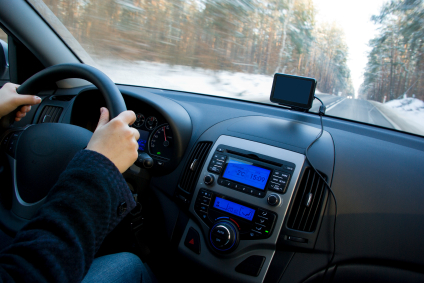Embedded computing has the power to transform the automotive landscape. Embedded automotive telematics technology can be used to enhance the comfort, convenience, situational-awareness, safety, entertainment and maintenance aspects of vehicles, all while resulting in cost savings.
For example, drivers operating cars under adverse conditions such as snowstorms have always wanted more information to enable safe, fast commutes to their destinations; most drivers obtain this information through the age-old practice of manually consulting other commuters on the road. Vehicle-to-vehicle (V2V) apps that gather and analyze real-time data from many vehicles could improve the experience for all participating drivers. Algorithms and systems that analyze cross-car location, proximity and other data gathered from on-car sensors can prevent accidents and steer drivers toward the most efficient routes to their destinations.
One can visualize the strategic use of embedded computing at multiple points in the automotive ecosystem. Sensors in cars can detect roads that are plowed/passable/impassable. Computer-vision will detect the exact heights of snow banks for snowplows to clear. Crowdsourced telematics aggregate information from other cars on the same or similar roads in a timely manner, allowing automated real-time dynamic route planning to enable drivers to avoid snow-covered, impassable roads on their commutes while automated notifications to snowplow-operators expedite cleanup.
Future applications in the automotive space might leverage embedded systems to assist drivers in navigating safely through crowded urban streets, by enabling automatic detection of and reaction to pedestrians, bicyclists, or other obstacles. They also could help drivers to negotiate roadways when driving conditions are difficult. Imagine a windshield that also serves as a display, providing a clearer view of the road ahead during a heavy rainstorm.
Automotive applications of the future could increase personal productivity as well. If consumers’ personal information (calendars, shopping lists, etc.) were seamlessly portable, the car of the future could learn about the owner’s lifestyle and behavior to help the driver and passengers to be more productive during the day. For example, if the car were passing a store that has an item on sale which the owner buys regularly, the car could provide an alert. Or, if the driver has several errands to run, the car could plan the route dynamically, in real time, using crowd-sourced telematics to avoid construction zones and other obstacles, completing the trip in the most efficient manner.
Learn more about the other application domains that the ISTC-EC is seeking to transform: retail and home.


